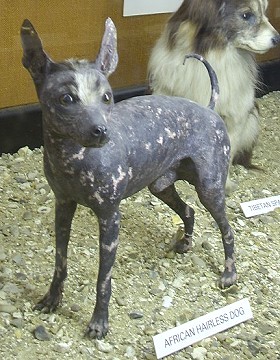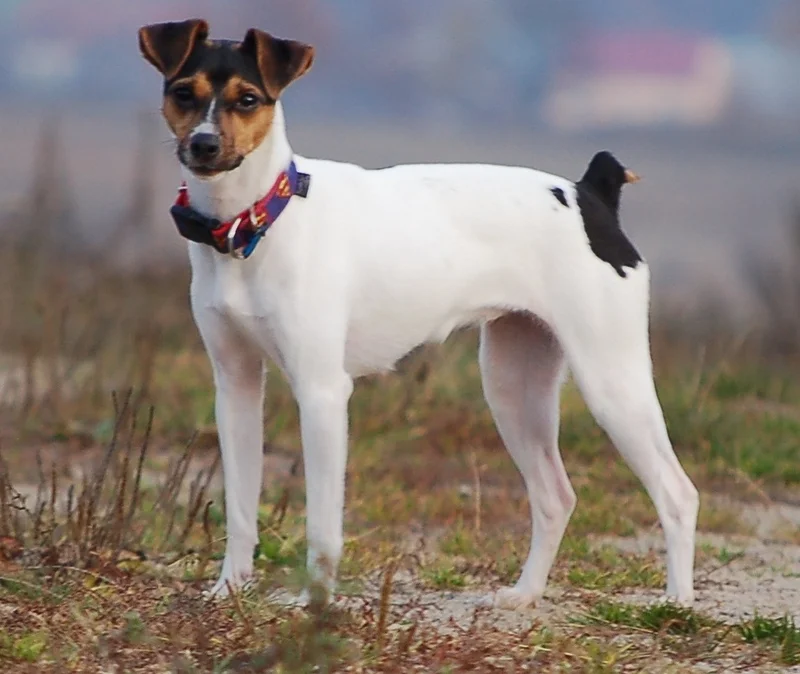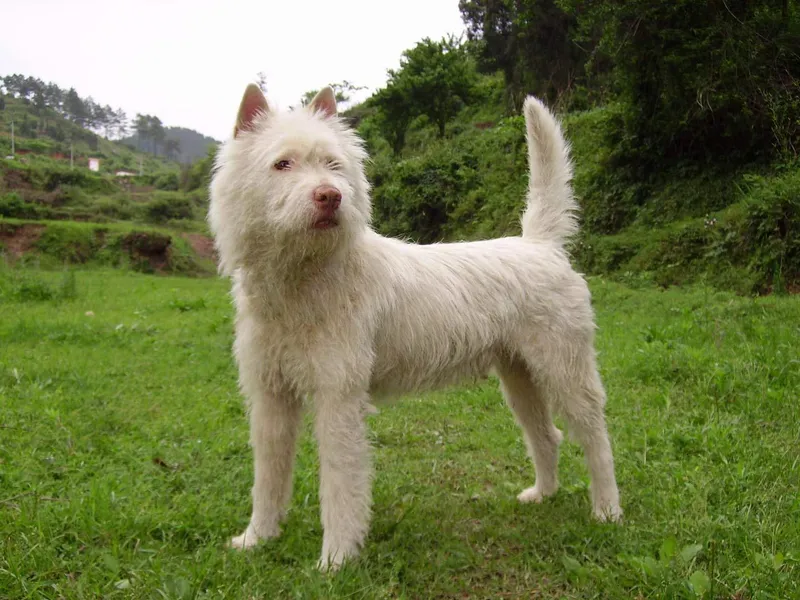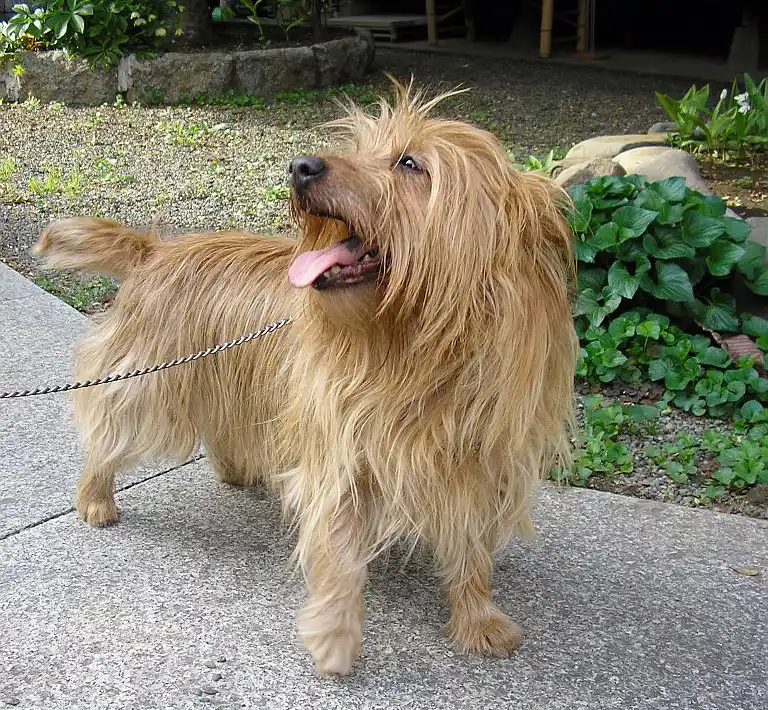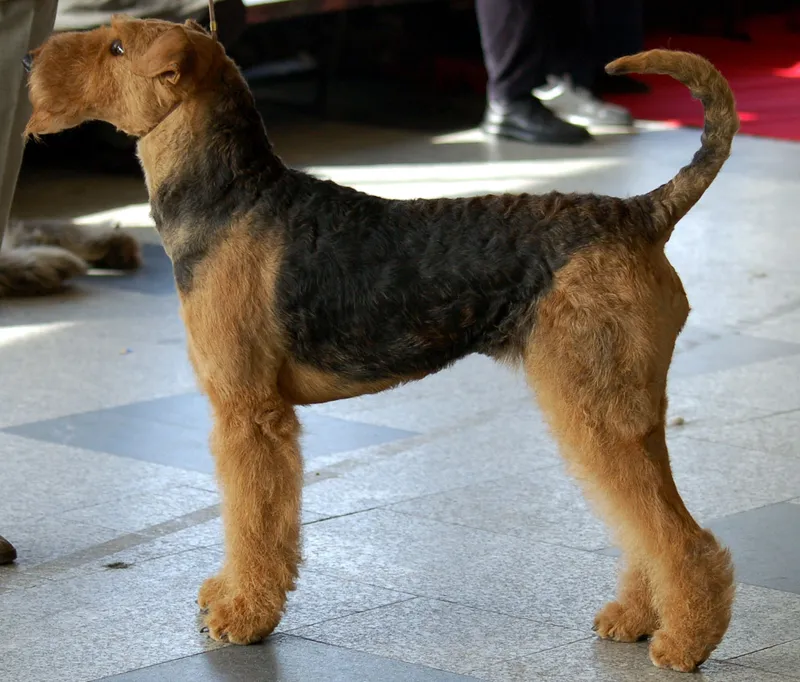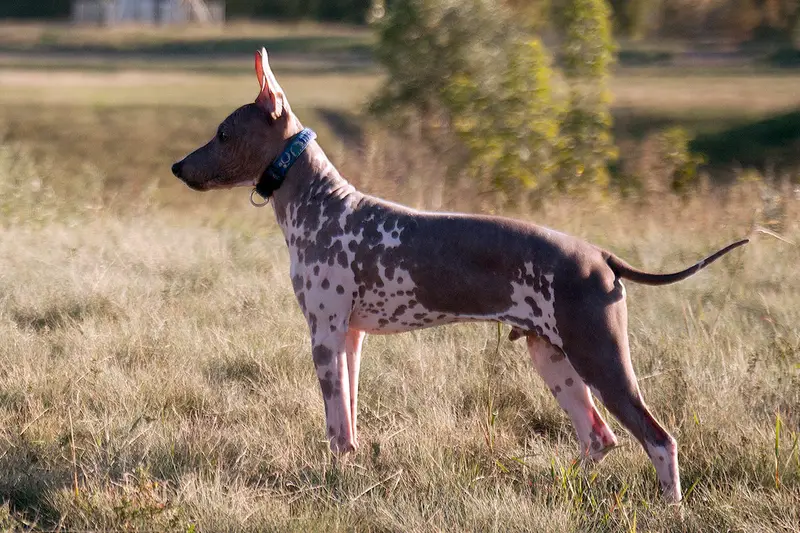Japanese Terrier
The Japanese Terrier is a small, lively breed known for its cheerful personality and affectionate nature. With a history rooted in Japan, this rare breed makes an excellent companion, requiring moderate exercise and minimal grooming.
Overview
🐕Breed Overview
✨Key Traits
💡What Makes Japanese Terrier Special
Japanese Terriers are characterized by their lively and cheerful nature, making them excellent companions. They are small but energetic, requiring regular exercise to keep them happy.
Their affectionate demeanor allows them to bond closely with their families, and they often display playful behavior, especially with children. Despite their terrier heritage, they are relatively easy to train and adapt well to various living situations, including apartments.
Their unique appearance, with a predominantly white coat and black spots, adds to their charm, making them stand out among small breeds.
The Japanese Terrier, also known as the Nippon Terrier, is a small, lively breed that has captured the hearts of dog lovers, particularly in Japan. With a history that dates back to the 17th century, this breed is believed to have descended from smooth fox terriers and local Japanese dogs, making it a unique blend of cultural influences. Standing at a height of 8 to 13 inches and weighing between 5 to 9 pounds, the Japanese Terrier is characterized by its predominantly white coat adorned with black spots, a black head, and high-set, forward-folding ears.
Despite its small size, the Japanese Terrier is known for its cheerful and spirited personality. They are affectionate companions, forming strong bonds with their families and displaying a playful demeanor. Their intelligence makes them relatively easy to train, although they can exhibit some stubbornness typical of terriers.
Early socialization and consistent training are essential to help them thrive in various environments. Living with a Japanese Terrier is a delightful experience, as they adapt well to apartment living but still require regular exercise to keep them healthy and happy. Daily walks, playtime, and mental stimulation through games are crucial to prevent boredom and destructive behaviors.
Their grooming needs are minimal, requiring only occasional brushing to maintain their sleek coat. While the Japanese Terrier is rare outside of Japan, its charm and lively nature make it a beloved companion for those fortunate enough to know this breed. With a lifespan of 10 to 11 years, they bring joy and companionship to families, making them an excellent choice for those seeking a small, affectionate dog.
🎉Fun Facts
Japanese Terriers have a lively and cheerful character, making them great family pets.
The Japanese Terrier is often referred to as the Nippon Terrier in Japan.
They are known for their agility and can excel in dog sports despite their small size.
This breed is quite rare, even in Japan, making them a unique companion.
Breed Characteristics
Family & Friends
Good Behavior
Get Up & Go
Household Harmony
Temperament & Personality
✨Key Traits
🐕Core Temperament
The Japanese Terrier has a friendly and cheerful temperament, making them a joy to have around. They are affectionate and enjoy being part of family activities, often seeking attention and companionship.
Their playful nature makes them great with children, and they typically get along well with other pets when properly socialized. While they can be reserved around strangers, they are generally friendly and curious.
This breed is intelligent and eager to please, which contributes to their trainability. Overall, their temperament is well-suited for family life, as they thrive on interaction and companionship.
💫Personality Profile
The Japanese Terrier is known for its lively and cheerful personality. They are affectionate and form strong bonds with their families, often seeking companionship and interaction.
This breed is playful and enjoys engaging in activities with their owners, making them excellent companions for children and adults alike. They are generally friendly towards strangers and other pets, although early socialization is essential to ensure they are well-adjusted.
Their intelligence allows them to learn commands quickly, and they respond well to positive reinforcement training methods. Overall, they are a delightful breed that thrives on human interaction and companionship.
🔊Vocal Tendencies
Japanese Terriers are generally not excessive barkers, but they will alert their owners to unusual sounds or visitors. Their vocalizations are typically cheerful and can include playful barks during playtime.
While they may bark to communicate or express excitement, they are not known for being overly noisy, making them suitable for apartment living. However, early training can help manage any excessive barking tendencies that may develop.
Affection & Social Traits
Energy & Activity
Communication Style
Care Requirements
🏃♂️Exercise Requirements
Daily Exercise
The Japanese Terrier is a small but lively breed that requires moderate exercise to maintain its health and happiness. Ideally, they should engage in at least 30 to 60 minutes of exercise daily, which can be broken down into several short walks or play sessions throughout the day.
Activities such as fetching, agility training, or even a good romp in a secure yard can help meet their exercise needs. Puppies may require shorter, more frequent play sessions, while older dogs may enjoy gentler activities.
Regular exercise not only helps manage their weight but also contributes to their mental stimulation, reducing the likelihood of behavioral issues such as boredom or anxiety. Insufficient exercise can lead to weight gain and destructive behaviors, so it's crucial to keep them active and engaged.
Preferred Activities
🏠Living & Adaptability
Space Requirements
The Japanese Terrier is adaptable to various living environments, making them suitable for both apartments and houses. However, they do benefit from having access to a small yard or nearby park where they can run and play.
In smaller living spaces, it is essential to ensure they receive adequate exercise and mental stimulation through regular walks and interactive play. Their small size means they can thrive in confined spaces, but they should not be left alone for extended periods, as they enjoy companionship and can become anxious if isolated.
Climate Preference
🍲Feeding Guide
Schedule
Food Types
Portion Size
Special Nutritional Needs
Japanese Terriers do not have specific dietary restrictions, but it is essential to provide a balanced diet rich in protein and healthy fats to support their energy levels. Monitoring their weight is crucial, as small breeds can be prone to obesity. Regular veterinary check-ups can help ensure their nutritional needs are being met.
✨Grooming Requirements
Grooming Overview
The Japanese Terrier has a short, slick, and fine coat that requires minimal grooming. Regular brushing once a week is sufficient to remove loose hair and keep the coat healthy.
Bathing should be done only as needed, as over-bathing can strip the natural oils from their skin. Pay attention to their ears, as regular cleaning can prevent wax buildup and infections.
Nail trimming should be done regularly to keep their paws healthy and comfortable.
Care Schedule
Brush weekly; bathe as needed; trim nails every 2-4 weeks.
Health Profile
⚕️Health Care
Routine veterinary care, including vaccinations, dental check-ups, and preventive treatments, is essential for maintaining the health and longevity of the Japanese Terrier. Regular health screenings can help detect potential issues early, allowing for timely intervention and management. Owners should also be vigilant about their dog's weight and overall health, adjusting their care routines as needed throughout different life stages.
Health Issues Overview
⏳Average Lifespan
Genetic Factors
Genetics play a significant role in the Japanese Terrier's lifespan, with hereditary health issues being a concern. Responsible breeding practices that prioritize genetic diversity can help reduce the risk of inherited conditions. Potential owners should seek reputable breeders who conduct health testing and provide transparency regarding the lineage of their puppies.
Living Conditions
The Japanese Terrier thrives in environments where they receive ample human interaction and mental stimulation. They adapt well to both urban and rural settings, provided they have access to safe outdoor spaces for exercise.
A stable and loving home environment contributes positively to their lifespan, as stress and neglect can lead to health issues. Regular socialization and interaction with family members are crucial for their emotional well-being.
🏥Common Health Issues
Patellar Luxation
Warning Signs
🔬Diagnosis
Physical examination and X-rays by a veterinarian.
💊Treatment
Surgical intervention may be required in severe cases.
📝Management Tips
Maintain a healthy weight, provide joint supplements, and consult with a veterinarian for treatment options.
Hip Dysplasia
Warning Signs
🔬Diagnosis
X-rays and physical examination.
💊Treatment
Surgery or medication may be necessary in severe cases.
📝Management Tips
Weight management, joint supplements, and controlled exercise can help manage symptoms.
Dental Issues
Warning Signs
🔬Diagnosis
Veterinary dental examination.
💊Treatment
Professional dental cleaning and possible extractions.
📝Management Tips
Regular dental care, including brushing and dental chews, can help prevent problems.
🛡️Preventive Care
🔬Hip Evaluation
Evaluates the dog's hip joints for dysplasia and other abnormalities, crucial for maintaining mobility and comfort.
📅 Annually after 2 years of age.
🔬Knee Evaluation
Checks for patellar luxation, which is common in small breeds and can affect mobility.
📅 Annually after 1 year of age.
🔬Dental Examination
Assesses dental health and identifies any issues that may require treatment, important for overall health.
📅 Every 6 months.
Training
🧠Intelligence & Trainability
💪Work Drive
While the Japanese Terrier is primarily a companion dog, they do possess a natural instinct for vermin control. Providing them with tasks or activities that stimulate their mind, such as puzzle toys or scent games, can help satisfy their need for mental engagement.
Regular playtime and interactive activities are essential to keep them happy and prevent boredom. Their history as a lively and cheerful companion means they thrive on interaction and engagement with their owners.
⚠️Training Considerations
Japanese Terriers are generally intelligent and eager to please, but they can exhibit some typical terrier traits, such as stubbornness or a strong prey drive. Common challenges include their tendency to chase small animals and their sometimes independent nature.
To overcome these challenges, consistent training and positive reinforcement methods are essential. Early socialization is crucial to help them learn to interact appropriately with other pets and people.
Engaging them in fun training sessions can also help channel their energy and intelligence into productive behaviors.
📝Training Tips
Training a Japanese Terrier can be a rewarding experience, as they are generally responsive and intelligent. Positive reinforcement techniques, such as treats and praise, work best.
Start with basic commands and gradually introduce more complex tasks. Consistency is key, and training should be kept fun and engaging to hold their attention.
Socialization with other dogs and people from a young age will help them develop into well-rounded adults. Incorporating play into training sessions can also enhance their learning experience and strengthen the bond between dog and owner.
History & Heritage
📜Origin Story
The Japanese Terrier's origins trace back to the 17th century when Dutch merchants introduced smooth fox terriers to Nagasaki, Japan's only open port at the time. These dogs were likely bred with local breeds, resulting in a small terrier that became popular among sailors and merchants.
The breed's development was informal until the 1920s when dedicated breeders began to refine the type, leading to the establishment of the Japanese Terrier as a recognized breed by the Japan Kennel Club in 1930. This breed reflects a unique blend of cultural influences and the historical context of Japan's interactions with the West.
⏳Development History
The Japanese Terrier is believed to have descended from a mix of smooth fox terriers and local Japanese breeds, brought to Japan by Dutch merchants in the 17th century. Initially, these dogs were not bred for any specific purpose but became popular as companion animals.
The breed's development began in earnest in the 1920s when fanciers started selective breeding to establish a clear type. By the 1930s, the Japanese Terrier was recognized by the Japan Kennel Club, marking its formal acknowledgment as a distinct breed.
Despite its rarity today, it remains a cherished companion in Japan and has garnered interest in Europe.
🛡️Purpose & Historical Role
Originally bred as a companion dog, the Japanese Terrier has also been utilized for vermin control due to its terrier instincts. Unlike many terrier breeds developed for specific working purposes, the Japanese Terrier was primarily kept as a pet, which has shaped its friendly and sociable nature. Today, they continue to serve as loving companions, providing joy and companionship to their families.
🏺Cultural Significance
The Japanese Terrier holds a unique place in Japanese culture as a companion dog, particularly in port cities like Nagasaki, Kobe, and Yokohama. Originally bred from European terriers and local breeds, they became popular as lap dogs among merchants and sailors.
Their lively and cheerful disposition made them favored pets, and they are often associated with the historical interactions between Japan and the West during the 17th century. Although they are rare today, their historical significance reflects the blending of cultures and the evolution of dog breeds in Japan.
Conservation Status
This breed is rare and not commonly found outside its region of origin.

